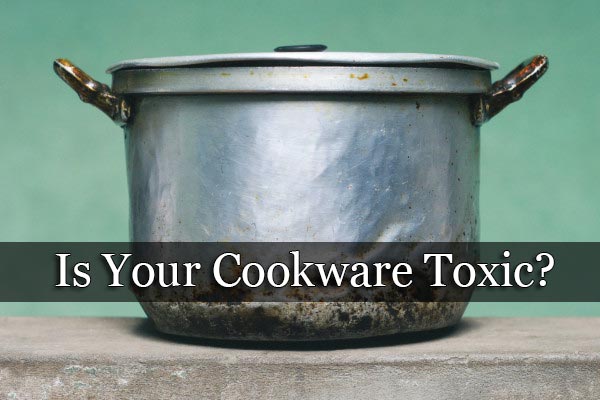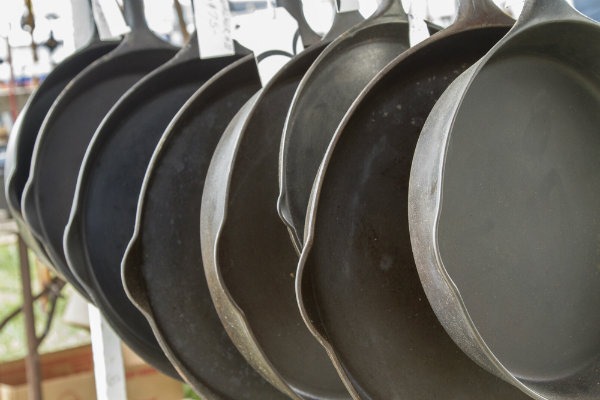Is Your Cookware Toxic?

Join the Living Green and Frugally Community on Facebook for inspiring content and discussions. By shopping on Amazon through our site, you can support our mission. Also, don’t miss out on exploring our collection of innovative ideas for self-sufficiency on our PINTEREST BOARDS. Connect with us today and be part of the sustainable journey!
Cookware is an essential part of every kitchen, but not all pots and pans are created equal when it comes to safety. The materials used in cookware can impact our health in various ways, and understanding the potential toxicity of different materials is crucial for making informed choices about what we use to prepare our meals. This article aims to delve into various types of cookware, discussing their benefits, drawbacks, and potential health implications.
1. Cast Iron Cookware
Cast iron has been a kitchen staple for centuries due to its durability and excellent heat retention. It’s known for its ability to evenly distribute heat, making it ideal for searing, frying, and baking. Moreover, cooking in cast iron can also boost iron intake, especially in individuals with iron deficiencies.
Pros:
- Excellent heat retention and distribution.
- Adds dietary iron to food.
- Long-lasting and durable.
Cons:
- Requires seasoning to maintain non-stick properties.
- Can be heavy and cumbersome.
- Not suitable for acidic foods as they can react with the metal.

2, Aluminum Cookware:
Aluminum is lightweight and conducts heat well, making it a popular choice for cookware. However, concerns have been raised about its potential health risks. Uncoated aluminum cookware can leach small amounts of the metal into food, especially when cooking acidic or salty dishes.
Pros:
- Good heat conductivity.
- Affordable and lightweight.
Cons:
- May leach aluminum into food, particularly in acidic or salty dishes.
- Reactive with certain foods.
- Not recommended for individuals with kidney problems or those seeking to minimize aluminum exposure.
3, Teflon (Non-Stick) Cookware:
Teflon or PTFE (polytetrafluoroethylene) coating offers a non-stick surface, making cooking and cleaning a breeze. However, the safety of Teflon-coated pans has been a subject of debate due to concerns over the release of toxic fumes when overheated.
Pros:
- Non-stick surface makes cooking and cleaning easy.
- Requires less oil for cooking.
Cons:
- Can release toxic fumes if overheated (above 500°F or 260°C), leading to flu-like symptoms known as polymer fume fever.
- Scratched or damaged surfaces may lead to potential ingestion of the coating.
- Shorter lifespan compared to other materials.
4, Stainless Steel Cookware:
Stainless steel is prized for its durability, resistance to corrosion, and non-reactive properties. It’s commonly used in a wide range of kitchen utensils and cookware.
Pros:
- Durable and long-lasting.
- Non-reactive and doesn’t leach into food.
- Easy to maintain and dishwasher safe.
Cons:
- Poor heat conductivity (some pans might have a layered base for better heat distribution).
- Food can stick if not properly seasoned or oiled.
- Higher quality stainless steel cookware can be more expensive.

5, Copper Cookware:
Copper cookware offers excellent heat conductivity and precise temperature control, favored by professional chefs. However, pure copper cookware can potentially leach into food, especially when cooking acidic dishes.
Pros:
- Superior heat conductivity.
- Provides precise temperature control.
Cons:
- Reactive with acidic foods, leading to leaching of copper into food.
- Requires regular maintenance and polishing to prevent tarnishing.
- Expensive compared to other materials.
6, Ceramic Cookware:
Ceramic cookware is made from natural materials and coated with a non-stick surface, offering a safer alternative to traditional non-stick coatings like Teflon.
Pros:
- Non-reactive and doesn’t leach chemicals into food.
- Non-stick properties without PTFE or PFOA.
- Easy to clean and maintain.
Cons:
- Can be prone to chipping or cracking.
- Not as durable as some other materials.
- May require more oil for cooking compared to Teflon-coated pans.
7, Carbon Steel Cookware:
Carbon steel cookware is durable, conducts heat well, and is lighter than cast iron. It can develop a natural non-stick patina over time, making it suitable for high-heat cooking methods like searing and stir-frying.
Pros:
- Excellent heat distribution.
- Can develop a natural non-stick surface.
- Durable and suitable for high-heat cooking.
Cons:
- Requires seasoning and maintenance.
- Prone to rust if not properly cared for.
- Reactive with acidic foods if unseasoned.

8, Glass Cookware:
Glass cookware is non-reactive and transparent, making it convenient for baking, roasting, and microwave use. It doesn’t leach chemicals into food, but it may not conduct heat as well as metal cookware.
Pros:
- Non-reactive material.
- Allows monitoring of cooking process.
- Safe for use in microwave and oven.
Cons:
- Not as efficient in conducting heat.
- Prone to breaking or shattering if exposed to sudden temperature changes.
- Limited versatility compared to other materials.
9, Stoneware Cookware:
Stoneware is made from clay fired at high temperatures, providing a non-stick surface without chemical coatings. It’s suitable for baking, roasting, and serving food.
Pros:
- Non-stick properties without chemical coatings.
- Retains heat well for even cooking.
- Versatile for baking and serving.
Cons:
- Can be heavy and prone to chipping or cracking.
- Requires careful handling to prevent breakage.
- May not heat as evenly as metal cookware.
10, Enamel-Coated Cookware:
Enamel-coated cookware is made by coating a base material like cast iron or steel with porcelain enamel. It offers a non-reactive surface and comes in various colors.
Pros:
- Non-reactive surface.
- Easy to clean and maintain.
- Versatile for different cooking methods.
Cons:
- Can chip or scratch, exposing the base material.
- Not suitable for high-heat cooking.
- Enamel may discolor or stain over time.
Selecting the right cookware involves considering various factors, including heat conductivity, reactivity with food, durability, and potential health risks. While no cookware material is entirely perfect, understanding their properties and potential drawbacks can help individuals make informed choices for a safer and healthier cooking experience. Regular maintenance, proper usage, and following manufacturer guidelines can also contribute to safer cooking practices regardless of the cookware type.